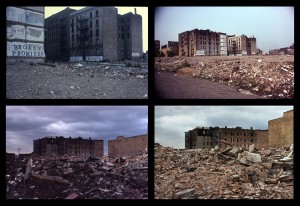“Here was the new math: the South Bronx had lost 600,000 manufacturing jobs: 40 percent of the sector disappeared. By the mid-seventies, average per capita income dropped to $2,430, just half of the New York City average and 40 percent of the nationwide average.” – Chang, pg. 13
This was the beginning of a new slum in the making in the Bronx. The Bronx was going into a “Depression” if you will during the 1950s-70s. It all started with a man named Robert Moses, one of the wealthiest urban developers of all time. His plan was to build the Cross-Bronx Expressway which would allow people to travel from the Bronx to New Jersey, upper Manhattan and the Queens in a matter of 15 minutes, but this came with a great cost. These were formerly pre-dominant Jewish and Italian communities, but because of Moses’ vision they were kicked out and would relocate to other parts of the city. The result was new housing in the Bronx, especially the southern part. The 50s and 60s were marked by a loss in jobs and sky high unemployment. Latino Americans and African Americans would move into these locations. Schooling was lost, drugs such as heroin were introduced to the neighborhoods of South Bronx and insurance frauds were at the high point in Bronx’s history. Developers were unable to find suitable renters, so buildings were burned down. The Bronx was a nightmare, which would lead to more problems.
With an influx of housing projects and violence in South Bronx, came neighborhood youth gangs in the late 1960s and early 1970s. Being part of a gang was a sign of power for many teen youth rebels and for many it was merely protection. That is what Chang describes on page 43, ” If you were looking for protection or trouble, you quit your clique and joined the Skulls.” Although the Skulls were not the only youth gang association in the Bronx, there were many others as well, but this one seemed to be one of the most feared and respected in the Bronx. In a sense gangs provided comfort, shelter and protection for many of their members. Many of these members were formally part of foster care, abusive homes and simply did not have their own identity until they had joined a gang, similar to Tata, a Savage Skull Girl who described the fact that if she was on her own she would not be able to survive. The formation of gangs was truly a historical development in the Bronx. They fought for what they had believed in, whether it was right or wrong. This would continue till today, however not as rampant as a few decades before.
David Shmidt


